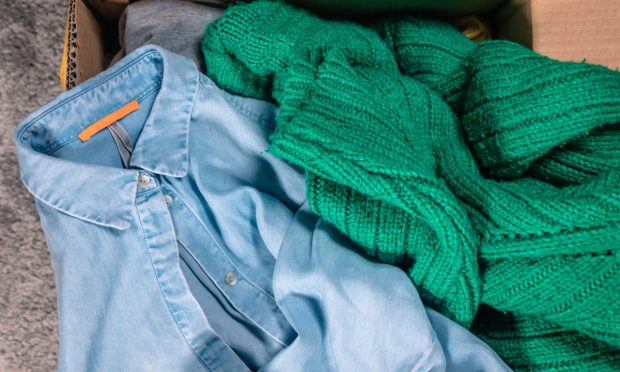Secondhand Market Presents ‘Big Opportunity’ for Retailers Ahead of Holidays

Over the past 18 months, the marketplace for B2B overstock sales and liquidation has faced what Marcus Shen calls “a tale of two cities.” At the onset of the pandemic, the chief operating officer of B-Stock said, both buyers and sellers slowed their activity as the economy shut down. But a few months later, a surge of secondhand inventory came online as retailers tried to move excess products out of supply chains, helping fuel a boom in secondhand sales.
“A lot of these small businesses who sell on their own store or Shopify or eBay or Poshmark or whatever it may be … had rising demand for this type of inventory to resell to consumers,” Shen told PYMNTS in an interview.
Shen said from a consumer perspective, demand for secondhand items “went crazy” during the pandemic as the world increasingly shifted online and supply chain disruptions caused rolling shortages of certain new items. A report released by thredUP and GlobalData earlier this year projected that in apparel alone, resale is expected to grow 11 times faster than the broader retail clothing sector over the next five years, with the secondhand market reaching $77 billion by 2025.
Shen said part of the increased demand likely comes from a generational shift where younger people “are far more socially conscious about goods and merchandise that they’re buying and consuming, and they certainly have increased demand for socially responsible companies.” According to a report by the National Retail Federation and IBM, 57% of consumers are willing to change their habits to reduce environmental impact.
“This young generation — Generation Z, millennials — all of them are just far more aware of what companies are doing with products and merchandise and things along those lines,” Shen said.
Additionally, the idea of buying secondhand no longer has as much of a stigma among consumers, Shen noted, “and so they can get good, quality goods, long-lasting merchandise, for less-than-retail prices.” He added that that’s probably “very, very appealing for folks,” especially as people continue to work through rising inflation and downward economic pressure brought on by COVID-19.
According to PYMNTS research conducted in collaboration with LendingClub, 125 million U.S. adults, or 54% of consumers, are living paycheck to paycheck, including 70% of millennials and 53% of people who earn between $50,000 and $100,000 per year.
See more: New Report: 53 Pct Of Upper-Income Americans Live Paycheck-To-Paycheck
“That idea of buying what’s called ‘quality they can count on’ as opposed to stuff that might be ‘one-and-done’ is certainly a big change that we’re seeing in consumer behavior,” Shen said.
And as supply chains remain tangled, especially for consumer electronics, Shen said retailers such as Best Buy and Amazon will continue to embrace the secondhand market to fulfill consumer demand. “With some of these shortages, secondhand becomes a much more compelling way to buy and get gifts and presents for the holiday season,” he said. “So I think that is definitely going to be one big opportunity.”
Keeping Up With Supply
As the pandemic has waned and retailers have a better hold on inventory levels, one reason why secondhand supply has remained strong, Shen said, is that brands, manufacturers and retailers are being smarter about putting more inventory available for sale on B2B marketplaces instead of sending it to a landfill. But consumers are also becoming more accustomed to “trading up,” especially with mobile phones and other electronics, which puts working merchandise back into the economy to be recirculated.
Having a trade-in program can also help build customer loyalty, Shen said; and for phone carriers, it’s also an economic decision to keep people on their network.
“The long-term value of that customer is extremely valuable and far outweighs the small cost of managing a trade-in program,” Shen said.
In the coming years, Shen said he expects more retailers will introduce trade-in programs, including apparel brands and appliance manufacturers. Already, secondhand marketplace thredUP offers a “Resale-as-a-Service” platform to help brands and retailers offer secondhand items to consumers.
“If there’s a way for them to kind of keep you on the brand, if they can keep you as a long-term customer and loyal to them, that’s a small price to pay,” Shen said.